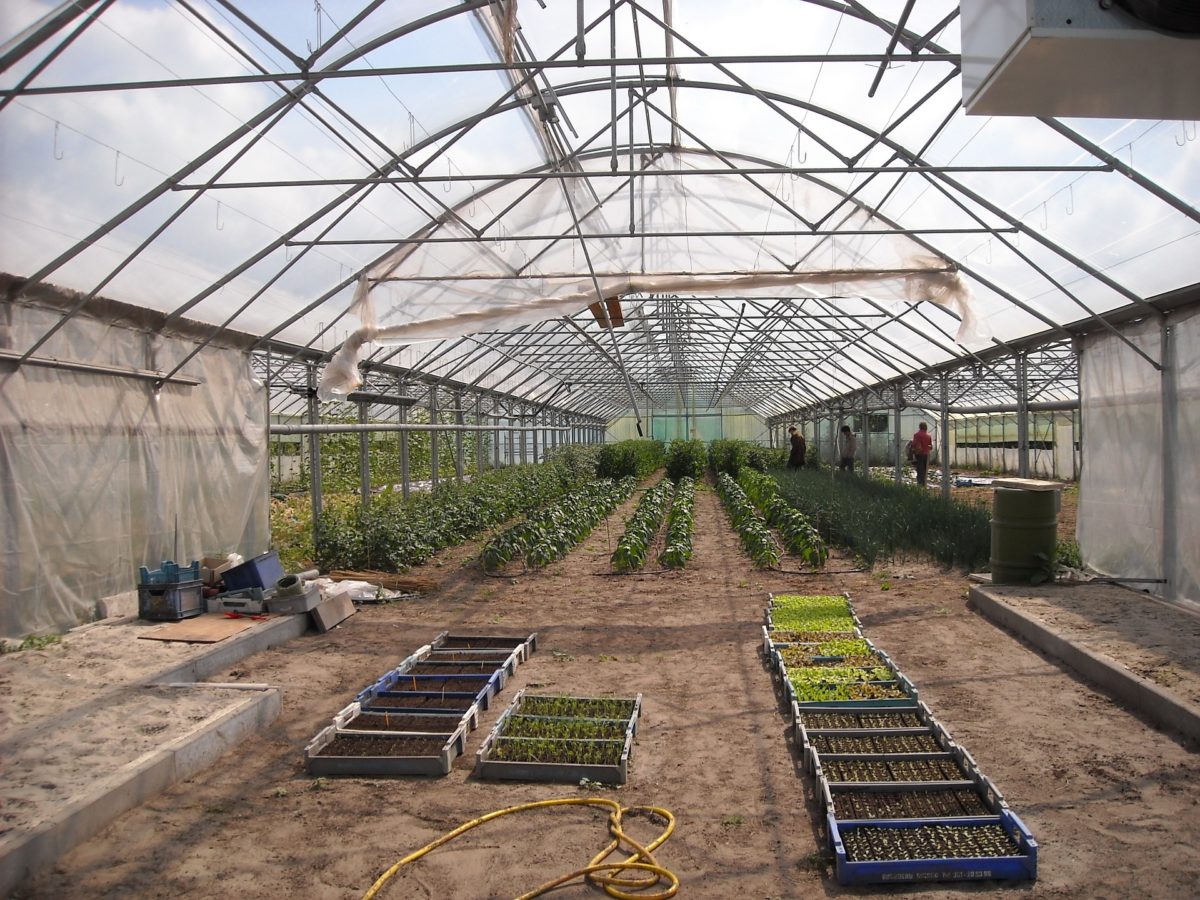Researchers from North Carolina State University say the use of semi-transparent organic solar cells can reduce the carbon footprint of greenhouses by powering the structures in warm and moderate climates.
“The promise of organic solar cells is justified due to recent rapid advancements in non-fullerene, small-molecule electron acceptors that have led to significant increases in organic solar cell power conversion efficiency, with many reports of 14-16% devices bringing the technology closer to commercial relevance,” states the paper Achieving Net Zero Energy Greenhouses by Integrating Semitransparent Organic Solar Cells, published in Joule.
Less competition for sunlight
The researchers said such cells would be particularly beneficial to greenhouses not only because of the electricity they would provide but because their spectral absorption could be tuned to minimize the loss of sunlight over the photosynthetic spectrum of plants. “We’re able to do this by using organic solar cells because they allow us to tune the spectrum of light that the solar cell absorbs – so we can focus on using mostly wavelengths of light that plants don’t use,” said research co-author Brendan O’Connor.
The scientists added, unlike opaque solar modules mounted on greenhouse roofs – which compete with the plants for sunlight – semi-transparent organic solar cells let more rays of sunlight reach the crop.
Cells as insulators
The idea was tested at three U.S. sites: Phoenix, Arizona; Raleigh, in North Carolina; and Antigo, in Wisconsin. The locations were chosen as they are in states with substantial greenhouse agriculture markets and represent three characteristic climate zones, described by the U.S. Department of Energy as hot-dry, mixed-humid and cold, respectively.
The North Carolina State researchers said semi-transparent cells on greenhouse roofs act as insulators as they reflect infrared light, helping keep the greenhouse warmer in winter and cooler in summer. A low-emissivity coating on the cells reduces the emission of radiant infrared energy and is responsible for retaining thermal energy inside greenhouses at night. “Through the improved thermal trapping at night, the OSC-greenhouses [organic solar cell] have significantly lower energy demand in the winter in all three locations,” the report noted.
Lower heating load
The reduction in heating load was particularly high in Phoenix, at 54%, with savings of 46% and 32% observed at Raleigh and Antigo, respectively.
In Arizona and North Carolina, the organic PV systems supplied all the annual energy needs of the greenhouses with surplus power used for supplemental lighting or fed back into the grid. “For example, in Arizona, the greenhouses could become energy neutral – requiring no outside source of power – while blocking only 10% of the photosynthetic band of light,” the study noted.
At the Wisconsin site, the researchers said, the organic PV system did not supply all the greenhouse energy requirements but did offer sufficient savings to make greenhouse production more attractive in the cold climate.
The scientists said their approach only considered static solar cells and limited design optimization and could offer further improvements in energy and crop yield with more refinement.
This content is protected by copyright and may not be reused. If you want to cooperate with us and would like to reuse some of our content, please contact: editors@pv-magazine.com.




By submitting this form you agree to pv magazine using your data for the purposes of publishing your comment.
Your personal data will only be disclosed or otherwise transmitted to third parties for the purposes of spam filtering or if this is necessary for technical maintenance of the website. Any other transfer to third parties will not take place unless this is justified on the basis of applicable data protection regulations or if pv magazine is legally obliged to do so.
You may revoke this consent at any time with effect for the future, in which case your personal data will be deleted immediately. Otherwise, your data will be deleted if pv magazine has processed your request or the purpose of data storage is fulfilled.
Further information on data privacy can be found in our Data Protection Policy.